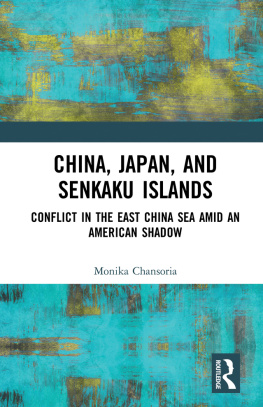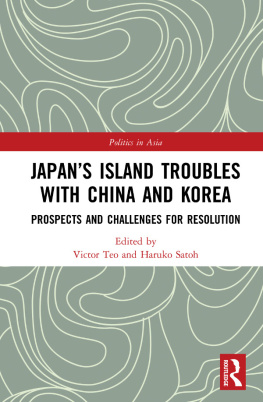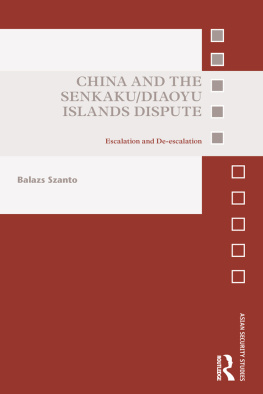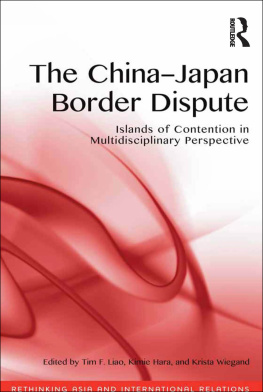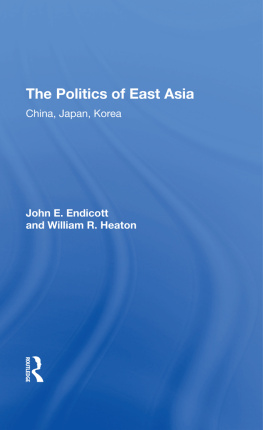CHINA, JAPAN, AND SENKAKU ISLANDS
Tracing the genesis of the Senkaku Islands in the memoirs of history, and its potential future, in the backdrop of the East China Seas brewing dispute, this book chronicles the journey of Sino-Japanese relations in the explicit context of the Senkaku Islands. The evolving power transition dynamics in East Asia render Washington the lynchpin of Tokyos diplomatic and security strategy, and vice versa. Conversely, China is abrasively displaying an almost predictable geo-strategic pattern and a strategy of enforcing territorial claims across Asia, keeping it just below the threshold of provoking conflict, whilst testing the tenacity of existential status quoist norms. Consequentially, the need to steer Asia towards a regional order that maintains stability in the power equilibrium, thereby challenging a visibly coercive Sino-centric vision of the future Asia, especially within the Indo-Pacific, has become far more manifest than ever before.
Dr. Monika Chansoria is a Senior Fellow, heading the China programme at the Centre for Land Warfare Studies in New Delhi, and a columnist on foreign policy and strategic affairs.
CHINA, JAPAN, AND SENKAKU ISLANDS
Conflict in the East China Sea Amid an American Shadow
Dr Monika Chansoria
First published 2018
by Routledge
2 Park Square, Milton Park, Abingdon, Oxon OX14 4RN
and by Routledge
711 Third Avenue, New York, NY 10017
Routledge is an imprint of the Taylor & Francis Group, an informa business
2018 Centre for Land Warfare Studies, New Delhi and KW Publishers Pvt Ltd
The right of Monika Chansoria to be identified as author of this work has been asserted by her in accordance with sections 77 and 78 of the Copyright, Designs and Patents Act 1988.
All rights reserved. No part of this book may be reprinted or reproduced or utilised in any form or by any electronic, mechanical, or other means, now known or hereafter invented, including photocopying and recording, or in any information storage or retrieval system, without permission in writing from the publishers.
Trademark notice : Product or corporate names may be trademarks or registered trademarks, and are used only for identification and explanation without intent to infringe.
Print edition not for sale in South Asia (India, Sri Lanka, Nepal, Bangladesh, Pakistan or Bhutan)
British Library Cataloguing in Publication Data
A catalogue record for this book is available from the British Library
Library of Congress Cataloging in Publication Data
A catalog record for this book has been requested
ISBN: 978-1-138-54129-0 (hbk)
ISBN: 978-1-351-01145-7 (ebk)
Typeset in Georgia - 12/16
by KW Publishers
Fondly, for my loving parents
The East China Sea is central to the power dynamics in the wider Indo-Pacific region, now the global hub of maritime security challenges. Monika Chansorias book highlights the importance of the East China Sea as a new centre of geo-political gravity by focussing on the strategic dimensions of the dispute triggered by Chinas increasingly assertive claim to the Japanese-controlled Senkaku Islands. The dispute is integral to Chinas larger ambition to fashion a Sino-centric Asia by challenging Japan in the East China Sea and India in the Indian Ocean and by asserting control to most of the South China Sea. In fact, as part of its quest for supremacy at sea, China has sought to extend its maritime frontiers by creating artificial islands and claiming sovereignty over them and their surrounding waters in the South China Sea and by declaring an Air Defence Identification Zone (ADIZ) in the East China Sea that extends to islands that it covets but does not control.
In this light, the East China Sea is critical to the contest for influence in the Indo-Pacific region, where the proliferation of submarines is already underscoring an undersea arms race. More than half of the world's submarines are likely to operate in the Indo-Pacific region. As China rapidly expands its submarine fleet, its actions and assertiveness are prompting other countries to step up their naval modernisation. Determined to take the sea route to secure global power status and to challenge the US-led international order, China is stepping up its strategic role and presence in the East and South China Seas in particular.
The East China Sea, against this background, is important not just for China and Japan but also for the outside powers from India and Australia to the United States and South Korea because what happens there will impinge on the power equilibrium in the Asia-Pacific and on the international maritime order. Chinas consolidation of power in the East China Sea will also have a direct bearing on the maritime and security interests of the extra-regional players. In fact, developments in the East China Sea carry the potential of upending even the current liberal world order, if brute power were to trump rules. The dispute over the Senkakus, as this book brings out, is, thus, more than just a bilateral matter between Japan and China.
Chinas elevation of its claim to the Senkakus to a core interest has made the prospect of resolving the dispute more difficult. Beijing has not only hardened its claim to the Senkakus but also some in China have gone to the extent of questioning Japans sovereignty over even Okinawa. Furthermore, with increasing frequency, China has dispatched ships and warplanes into Japans territory around the tiny Senkakus. All this suggests that China has little interest in ending the dispute any time soon or settling it peacefully. However, unlike in the South China Sea where Beijing has continued its territorial creep and trashed an international arbitral tribunals ruling that held that it has no legal or historical basis to claim most of the region China has found the going tough in the East China Sea.
Chinas leaders may have thought that undertaking aggressive activities such as the increasing intrusions into Japans air space and territorial waters, and even dangerous actions that could cause a contingency situation, would compel Tokyo to bow to their demands. Instead, their actions have accomplished the opposite shaken Japan out of its complacency and diffidence and set in motion Japans political resurrection. Japan is beefing up its military capabilities to defend the Senkakus and some 400 other islands that serve as markers for its territorial waters. Japan has also strengthened its alliance with the US and forged new strategic ties with India and some other Asian states. The Japanese government, by easing a longstanding, self-imposed ban on arms exports, boosting defence spending, and asserting its right to exercise collective self-defence, has opened the path for Japan to collaborate more actively with friendly states.
Chinas territorial assertiveness, by contributing to Japanese insecurity, is also fostering conditions for constitutional reform in Japan. No other country in the world is bound by the kind of constitutional restrictions that were imposed on a vanquished Japan by the occupying American forces after World War II. Yet Japan has clung to its US-imposed Constitution without so much as carrying out a single amendment, even as the United States has enacted six amendments to its own Constitution in this period. Today, US security interests would be better served by a more confident and secure Japan that assumes greater responsibility for its own defence and for East Asian security. Japan is the only power that can block China from gaining ascendancy in the region. If the US lends open support to constitutional reform in Japan, it will not only blunt Chinese criticism of the move but also assuage the concerns of many Japanese who link the Constitution with the long period of peace the country has enjoyed.




